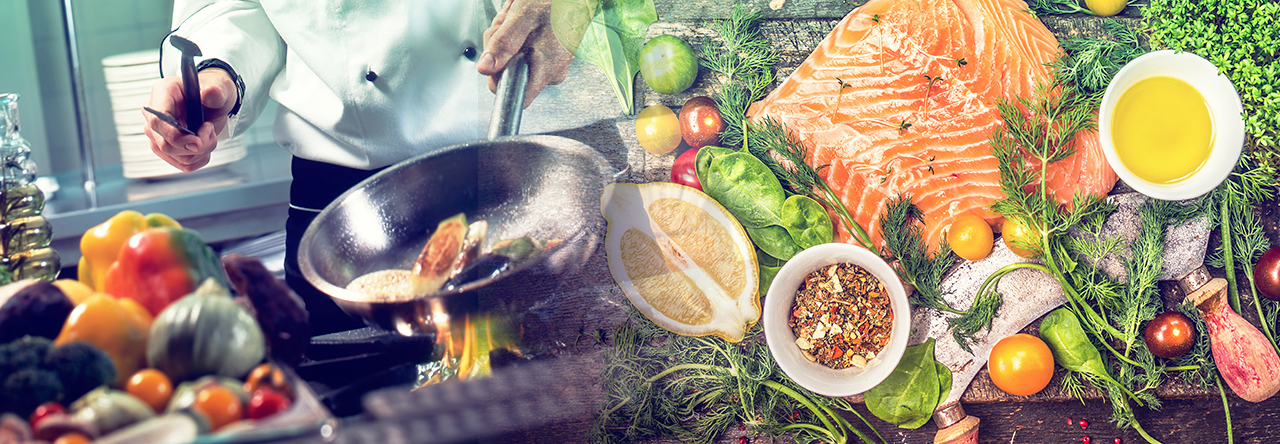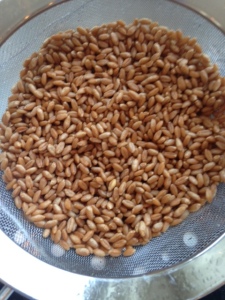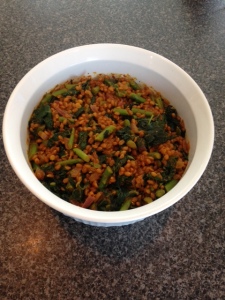A couple of weeks ago I told you about a recipe for Spring Green Risotto and said you could skip the step of heating your broth and that you did not need to babysit or stir the risotto quite as much as suggested. It occurred to me that there are other recipes that allow you to skip a step or two to make preparation easier or get the meal on the table a bit faster. Here are two that I made recently:
- One Pot Pasta
- Refried Beans Without the Refry
One Pot Pasta
My husband loves pasta and makes it often on those occasions when he cooks for himself. I have told him over and again that he does it wrong but he doesn’t listen and doesn’t complain about the results. Turns out I should have cut him some slack.
I’ve seen several of these One Pot Pasta recipes lately and it’s not so much a recipe as a technique. You can use whatever ingredients you like. Mine contained:
- 1/2 cup canned or frozen artichoke hearts (thawed), quartered
- 2 Roma tomatoes, chopped
- 1/2 onion, chopped
- 1/2 cup black or kalamata olives, sliced in half
- 2 cloves garlic, minced
- 2 teaspoons capers, drained
- 1/2 teaspoon dried red pepper flakes (or more to taste)
- 1 teaspoon Italian seasoning (I used a special pasta blend)
- 4 cups low sodium vegetable broth
- 2 oz. whole wheat spaghetti noodles, broken in to short pieces
In a large pan over medium high heat, add onion and artichoke hearts to the pan with a little of the vegetable broth. Cook for 2-3 minutes until onion softens. Add remaining ingredients and stir to combine. Cook for 10-12 minutes, stirring occasionally, until most of the liquid is absorbed. You may need to add more broth or water if the pan gets dry before the pasta is finished cooking. I added a little baby spinach just at the end and stirred it through to wilt.


Getting all of your ingredients organized and ready ahead of time is a great time saver in the kitchen. The French call this “mise en place” (mees on plahs). Don’t skip this step!

Refried Beans Without the Refry
I cook a lot of beans. My usual method requires some planning. It starts with soaking the dry beans for 6-8 hours prior to cooking, which may take an additional 1 1/2 – 2 hours. Turns out you can skip the soaking if you turn to your trusty slow cooker. This may not work for all types of beans, and in fact I have read that it is better to soak kidney beans because they contain a compound that is more apt to cause digestive upset.
This recipe for Refried Beans Without the Refry comes from Allrecipes.com. It uses no added fats. I increased the vegetable content and heat a bit by using the whole jalapeno plus 2 banana peppers and one Poblano pepper. Important note: the original recipe called for 5 teaspoons of salt. This is a big pot of beans but that is a lot of salt! I was happy with 2 teaspoons.

Refried beans are great for nachos, tacos, burritos, etc. I am using them this week in a wrap for lunch. Here is my whole wheat tortilla filled with refried beans, 1/2 an avocado, and a cup of baby kale.

Watch for more posts like this in the next few week as I follow “Skip It” with “Stick It”, “Shred It”, and “Stuff It”.
















